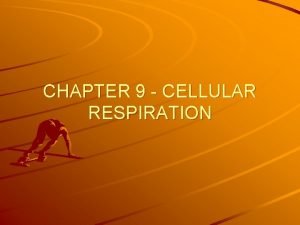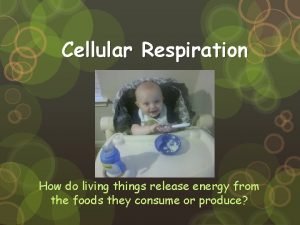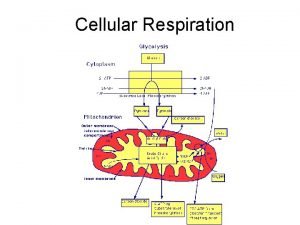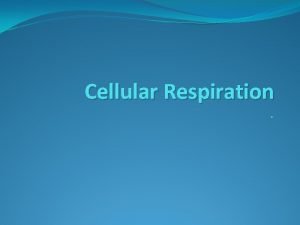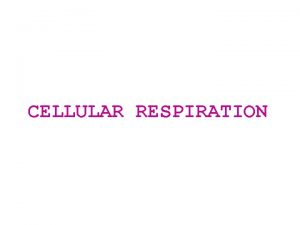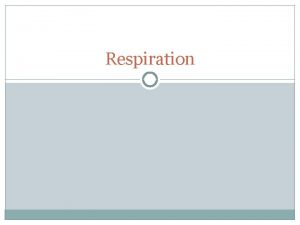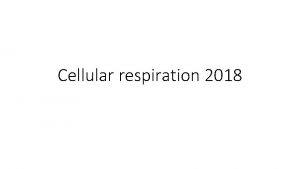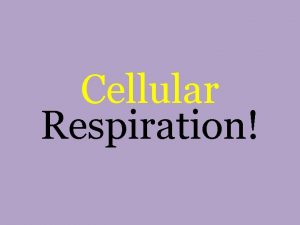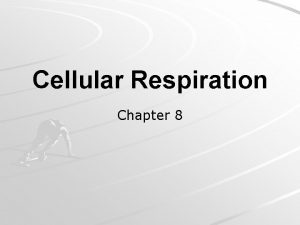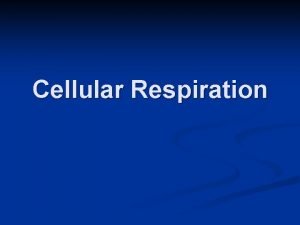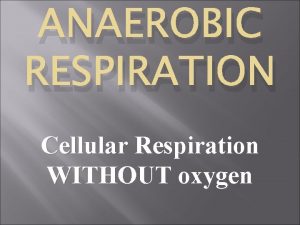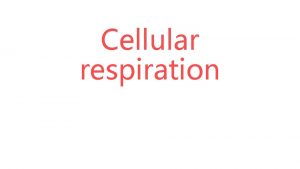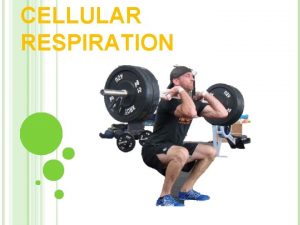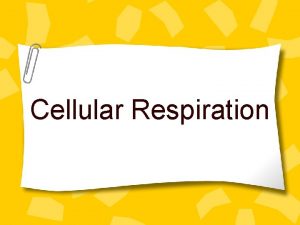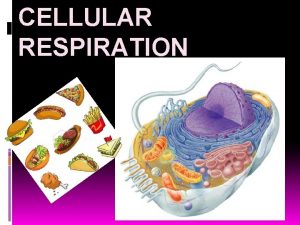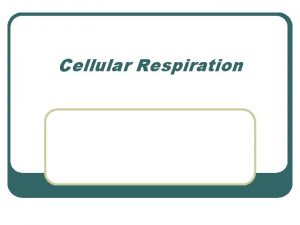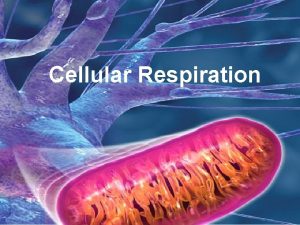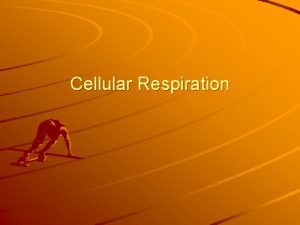CELLULAR RESPIRATION Cellular Respiration The process that releases























- Slides: 23

CELLULAR RESPIRATION

Cellular Respiration The process that releases energy (ATP) by breaking down food molecules in the presence of oxygen

Mitochondria Found? Plant & Animal Cells Where respiration takes place Just aerobic parts

Aerobic Vs. Anaerobic Respiration Aerobic = presence of O 2 Respiration 36 ATP per glucose Anaerobic = absence of O 2 Fermentation 2 ATP per glucose

Pathway of Cellular Respiration Glycolysis (Cytoplasm) Krebs Cycle (Mito. ) Electron Transport Chain (Mito. )

Glycolysis “Glukus” = sweet “Lysis” = loosening Occurs in Cytoplasm Breaking one glucose down into 2 pyruvic acids(3 Carbon) & 2 ATP (net)

After Glycolysis Anaerobic = Fermentation Aerobic = Cellular Respiration

Fermentation will make energy without O 2 Two types Alcoholic Lactic acid

Alcoholic Yeast & other microorganisms CO 2 causes bread to rise

Lactic Acid Animal muscles Happens during vigorous exercise Builds up in muscles causing cramps

Krebs Cycle Follows glycolysis Needs oxygen Respiration Occurs in mitochondria Breaks down products of glycolysis into carbon dioxide Releasing energy to make electron carriers and ATP

Krebs Cycle

Electron Transport Chain Inner membrane of mitochondria Electrons move to produce energy

ETC: Makes ATP – 2 -3 per electron carrier Oxygen is used as the final electron acceptor (H+) Forms water

Mitochondrial membrane NADH enters and releases an H+ and an electron.

Mitochondrial membrane e- NAD+ NADH enters and releases an H+ and an electron.

Mitochondrial membrane e. O H+ H+ The electron travels to the next protein while simultaneously sending H+ across the membrane

Mitochondrial membrane H+ H+ H+ H 2 O H+ H+ H+ ADP P The electron is used to form water. The H+ then are pumped back into the mitochondria.

Mitochondrial membrane H+ H+ ATP H+ H+ This allows ATP to be made each time a H+ enters back in.

Totals Glycolysis Net 2 ATP Krebs 2 ATP ETC Electron carriers = 32 ATP **Total = 36 ATP


Photosynthesis Vs Cellular Respiration

 Cellular respiration releases
Cellular respiration releases Cellular respiration releases
Cellular respiration releases The process of photosynthesis and cellular respiration
The process of photosynthesis and cellular respiration Cellular respiration process diagram
Cellular respiration process diagram Steps 1
Steps 1 Cellular respiration is a complex process that
Cellular respiration is a complex process that Ngoại tâm thu thất chùm đôi
Ngoại tâm thu thất chùm đôi Block nhĩ thất độ 3
Block nhĩ thất độ 3 Thể thơ truyền thống
Thể thơ truyền thống Thơ thất ngôn tứ tuyệt đường luật
Thơ thất ngôn tứ tuyệt đường luật Walmart thất bại ở nhật
Walmart thất bại ở nhật Tìm vết của mặt phẳng
Tìm vết của mặt phẳng Hãy nói thật ít để làm được nhiều
Hãy nói thật ít để làm được nhiều Tôn thất thuyết là ai
Tôn thất thuyết là ai Gây tê cơ vuông thắt lưng
Gây tê cơ vuông thắt lưng Sau thất bại ở hồ điển triệt
Sau thất bại ở hồ điển triệt Aci meaning in network
Aci meaning in network Which structure releases glucagon
Which structure releases glucagon The yucca plant releases a strong scent at night
The yucca plant releases a strong scent at night The yucca plant releases a strong scent at night
The yucca plant releases a strong scent at night Redox reaction in cellular respiration
Redox reaction in cellular respiration What is the correct equation for cellular respiration?
What is the correct equation for cellular respiration? Chemiosmosis steps
Chemiosmosis steps Where is aerobic respiration located
Where is aerobic respiration located
